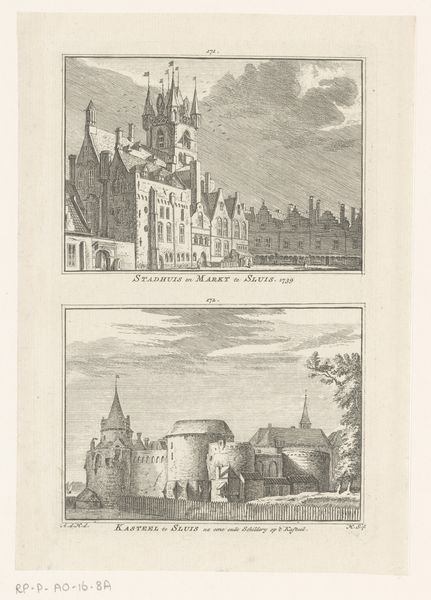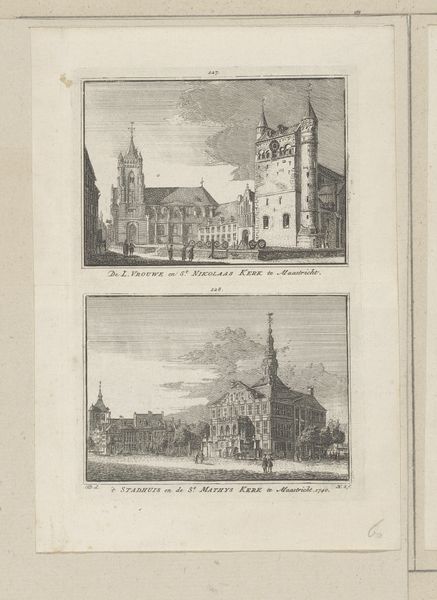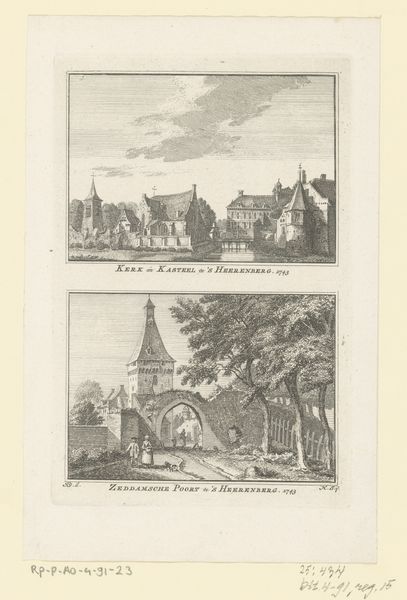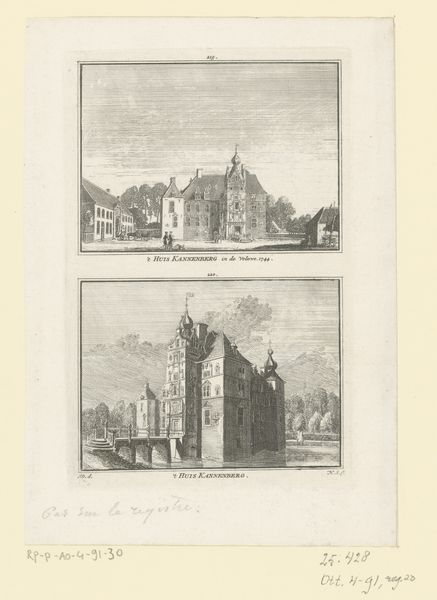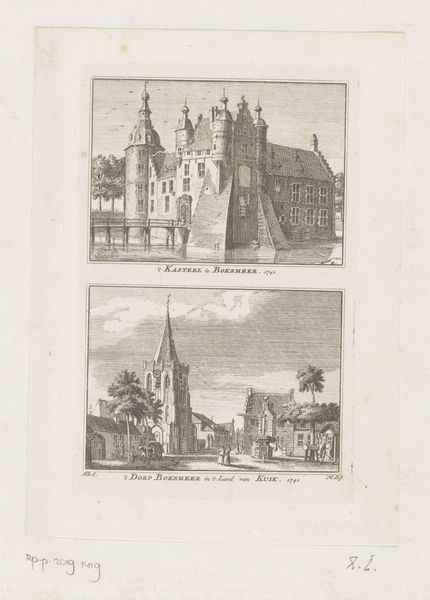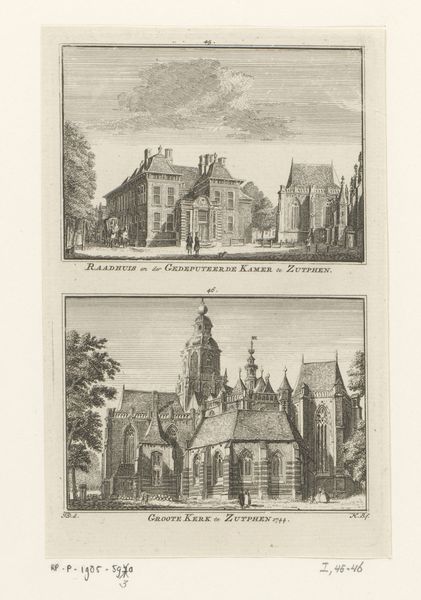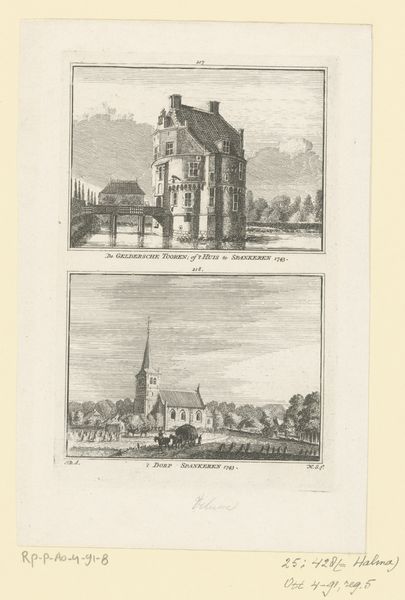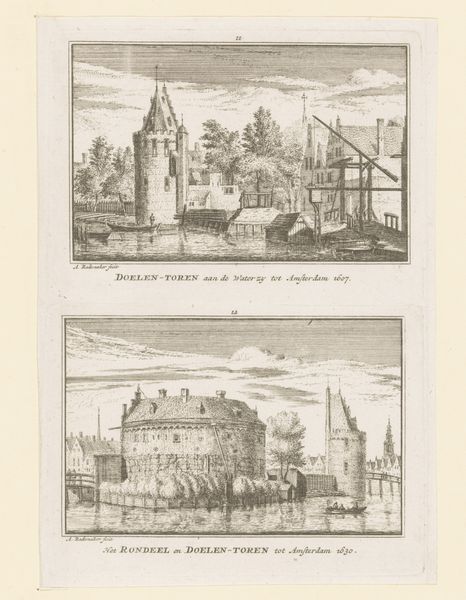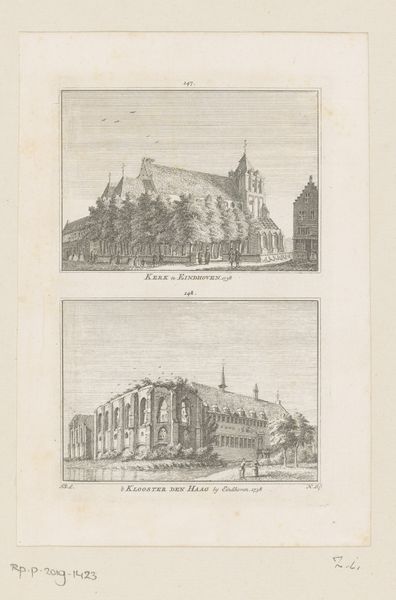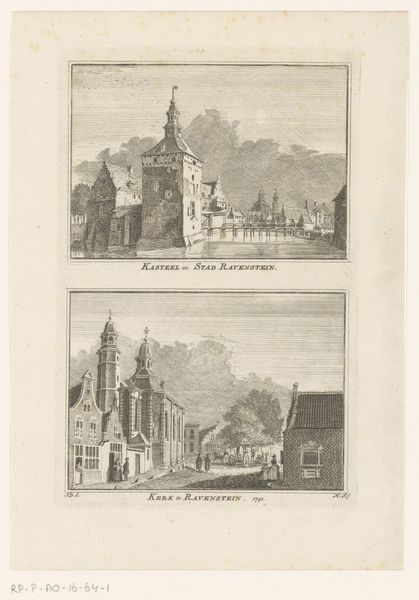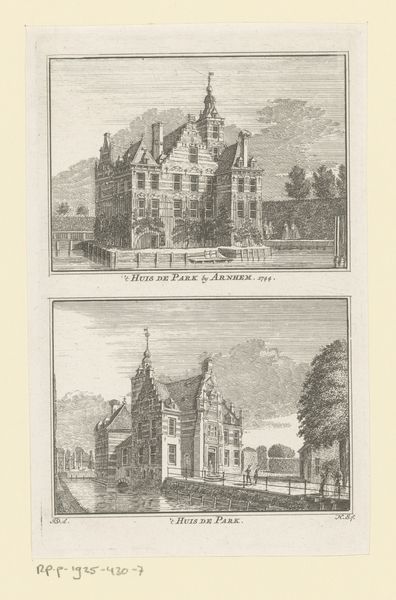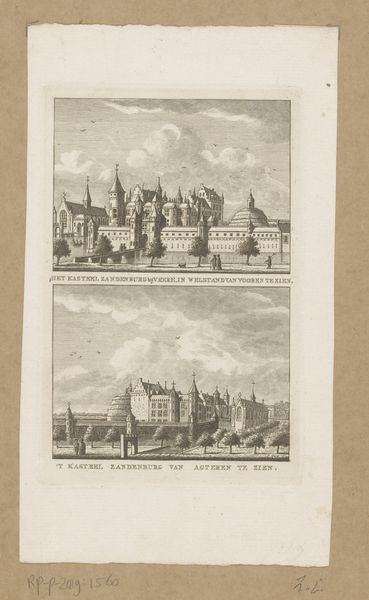
print, etching, paper, engraving, architecture
#
dutch-golden-age
# print
#
etching
#
old engraving style
#
landscape
#
paper
#
cityscape
#
engraving
#
architecture
Dimensions: height 168 mm, width 110 mm
Copyright: Rijks Museum: Open Domain
Hendrik Spilman created this print of Borculo Castle using etching, a printmaking technique that democratized image production in the 18th century. Etching involves coating a metal plate with a waxy, acid-resistant substance called a ground. The artist then scratches an image into the ground, exposing the metal beneath. When the plate is submerged in acid, the exposed lines are "bitten" or etched into the metal. The longer the plate remains in the acid, the deeper and darker the lines become. The fine lines of the image are a direct result of the labor-intensive etching process. Think of the artist carefully drawing through the ground, then the corrosive action of the acid on the metal. These precise methods allowed for mass production of images, making art more accessible but also changing the economics of artmaking. Spilman's print reflects not only the castle's architecture but also the changing landscape of art production in an era of growing commerce.
Comments
No comments
Be the first to comment and join the conversation on the ultimate creative platform.
